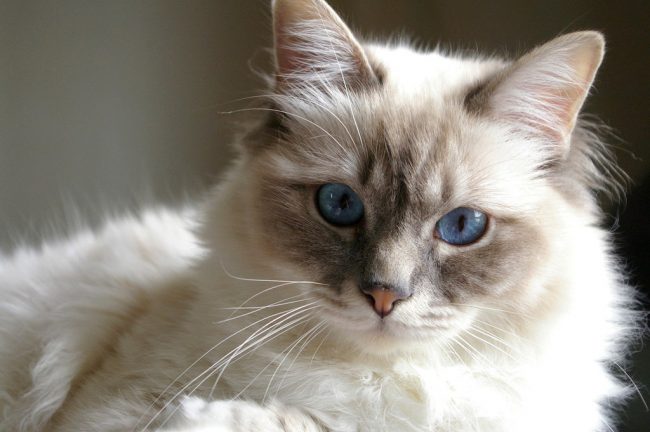
Cat distemper is a deadly viral disease that has a wide range of symptoms.
In cats, the disease can be of three forms: fulminant, acute and subacute, on which its duration and speed depends leakage.
In medicine, the plague is called panleukopenia, viral enteritis, or parvovirus gastroenteritis.
In fact, it is a deadly disease that is caused a virus called Feline Panleukopenia .
This virus is extremely tenacious, it is resistant to various degrees freezing and heating.
In addition, it cannot be destroyed by conventional means. disinfection.
In an unfavorable environment, it can exist around of the year.

The causative agent of enteritis is an extremely tenacious Feline virus Panleukopenia
The consequence of the high viability of this virus is its high prevalence.
The danger of getting panleukopenia for a person, like for others animals are missing.
But it is very contagious for cats.
Content
- 1 Signs of plague in cats: how does viral manifest enteritis?
- 2 Infection and action of the virus
- 3 Plague treatment
- 4 What are the ways to prevent plague?
Contents
Plague in cats is of three forms, on which depends the duration and speed of its course, as well as symptoms.
These forms include:
Fulminant form of panleukopenia
The fulminant form of the plague, which is also called the super-sharp, is a course of the disease that occurs mainly in kittens in age of two weeks.
They can be like cubs of medium-sized cats like the British and Maine kittens kunov.
It leads to a sharp deterioration in the well-being of the animal, which manifested in the refusal of kittens to suck milk, in mournful food, apathy during wakefulness.
Even if you start treating the kitten on time, it is likely to die in for two days.
The virus develops especially rapidly in infants with weakened organism – a disease can kill an animal without even manifesting itself symptomatically, without any signs.
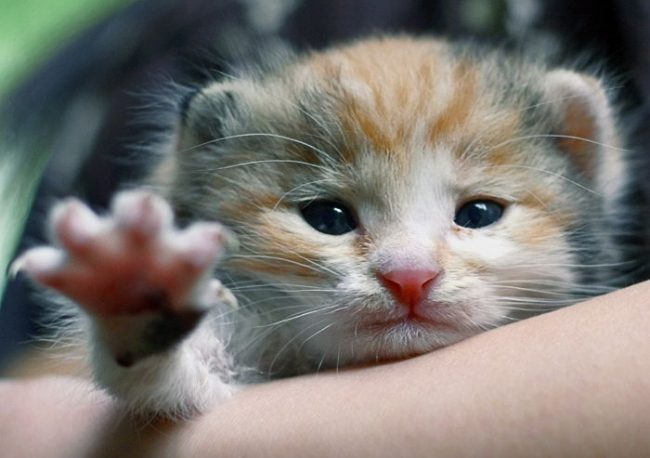
Due to weak immunity, the fulminant form most often occurs in kittens
At the age of three to seven months, panleukopenia can greatly affect the nervous system.
The first symptoms appear in the fact that at night the kitten may not to sleep, and during the day – to hide in dark corners, to be afraid of loud sounds and squealing heartily when they scare him.
At times, enteritis in fulminant form manifests itself in such symptoms like:
- Cramps
- Body tremors;
- Paralysis;
- Vomiting with yellowish or greenish foam;
- Vomiting of blood;
- Diarrhea with a bright unpleasant odor;
- Loss of appetite;
- Lack of thirst;
- Permanently dirty, disheveled and dull coat.
More information on what to do if the kitten diarrhea can be found here: https: //kot-pes.com/ponos-u-kotenka/

The acute form of plague occurs in adult animals
Acute viral enteritis
The acute form of this viral disease is found in adult animals.
The symptoms in this case are different from the symptoms of fulminant forms of viral enteritis, and are as follows:
- The cat noticeably loses activity, constantly lies, stops respond to the voice of the owner and his touch;
- The animal is breathing heavily;
- Appetite is lost, even to your favorite treats;
- Vomiting occurs with foam and blood;
- There is light diarrhea and rumbling in the stomach;
- Body temperature rises to 41 degrees and then either returns to normal, indicating increased chances animal survive, or drops to 37 degrees – then the forecast disappointing, the risk of death of the cat increases.
- Mucus and blood are mixed with vomiting, it becomes viscous;
- The pet almost stops drinking, although thirst is present – the cat approaches the water, but does not try to drink it;
- On the belly of the pet and elsewhere on the skin appear red spots that suppurate and fall away.
If panleukopenia has reached the upper respiratory tract, bronchi and lungs, the following are added to the general symptoms:
- Frequent coughing;
- Discharge from the eyes and nose;
- Hot and dry, crusty nose;
- Wheezing in the chest when breathing;
- Inflammation and swelling of the mucous membrane of the larynx.
In addition, these symptoms may indicate that the cat there are secondary infections that worsen the general condition and exacerbate the disease.
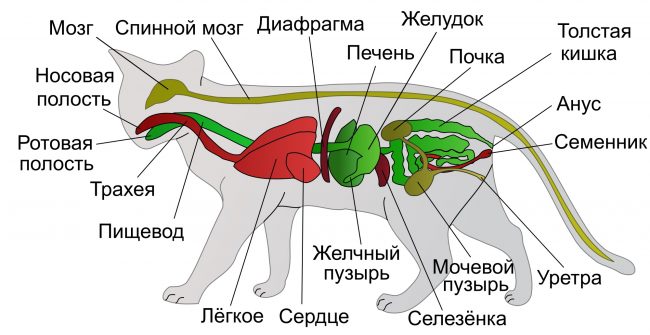
Symptoms of the disease depend on the number of organs that it struck
If the plague hit the heart, the cat begins to breathe open by mouth, she develops tachycardia and heart failure.
All these signs of the plague appear for two to five days.
If no treatment is taken, the death of the animal will be sudden.
And when the treatment is carried out effectively, and in the body secondary infections are observed, the cat can recover in 5-7 days.
It must be understood that the virus-transmitted cat throughout for a long time continues to isolate parvovirus bacteria gastroenteritis with feces, urine and saliva, so the risk of infection other cats are absolutely real.
In a recovered pet, immunity is acquired for several years, and possibly for a lifetime.
Subacute form of parvovirus gastroenteritis
Plague in the subacute form of the course of the disease is most often found in Strongly immune adult or older cats, and vaccinated.
If you are interested in learning about the oldest cat in the world, recommend reading articlehttps: //kot-pes.com/samyiy-staryiy-kot-v-mire/
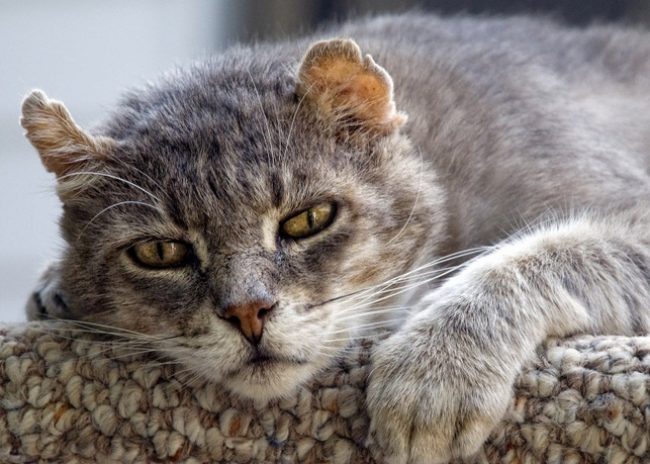
The subacute form is less dangerous, it is most often found in old and mature cats with good immunity
Her symptoms are similar to symptoms in acute form, but manifest less pronounced.
The progression of the disease, which lasts from one to three weeks.
In general, animals with subacute enteritis get well soon.
Infection and action of the virus
The parvovirus gastroenteritis virus is contained in an environment associated with sick or newly ill plague animals.
These media include saliva, feces, nosebleeds.
Almost all breeds are affected, including individuals Peterbalds, Don sphinxes regdolls, maine coons, and even exotic cats like toygers, egyptian Mau, servals and Kurilian bobtail.
Viral enteritis infection itself occurs in the following ways:
- By contact, when the animal interacts with carrier virus or in contact with its saliva, feces or outflows from the nose;
- By airborne droplets, when a pet becomes infected with a plague air, being next to an infected cat;
- In utero. So kittens from the patient can become infected mothers.
- Through parasites – the virus can be transmitted by bloodsucking insects parasitizing on infected cats, such as ticks, fleas and lice.
- Through man. There are cases when the owner can bring the virus home on your shoes or on your clothes. In this way, even cats that always remain in apartment.
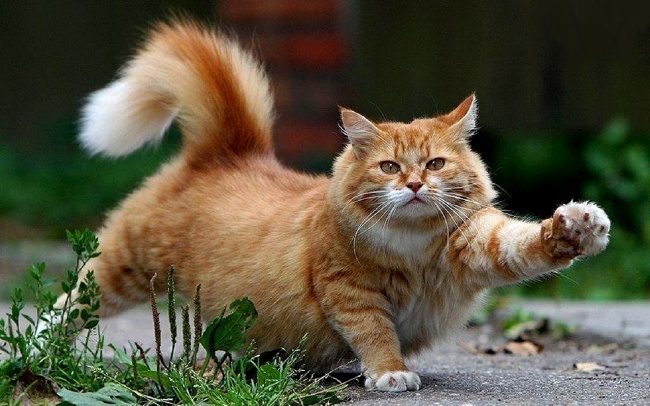
Most of all, the cat risks becoming infected by contact with feces. virus carrier
First of all, the parvovirus gastroenteritis virus negatively acts on the blood.
Once in the body, the plague sharply reduces the number of white blood cells, intoxicates and affects organs and tissues, such as:
- Intestinal mucosa;
- Bone marrow;
- Heart;
- Lungs;
- Lymphoid tissue.
The defeat of the body systems entails the development of cardiac insufficiency, dehydration, digestive problems system.
The smaller the animal’s age, the less likely it is that it will survive.
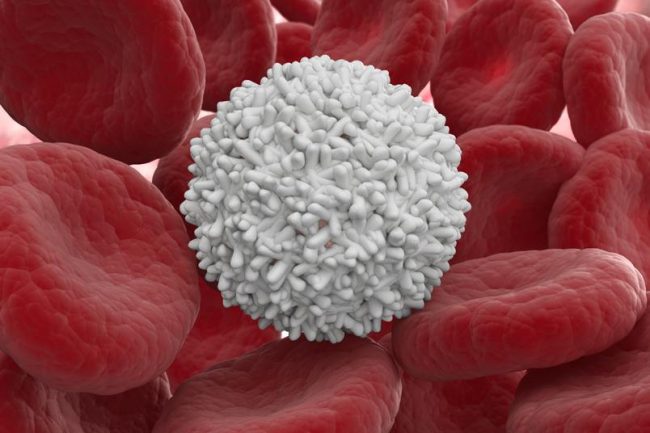
First of all, viral enteritis affects white blood cells cat
The body of kittens is the least resistant to the plague – from infected, only 10% of the litter survives.
Among adults, mortality is lower, but still remains very high – from the diseased, 30-60% survive.
So, the death of a cat occurs due to factors such as:
- Severe dehydration;
- Heart failure;
- The effect of secondary infections.
If we talk about risk groups, then the least risk is healthy animals under six years of age are infected.
As the animal’s immune system weakens with age, the body’s defenses are depleted, cats older than seven to eight years get sick with a plague much more often.
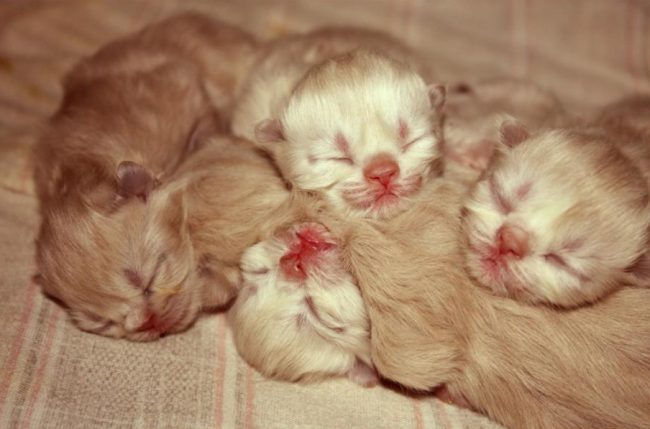
Kittens under the age of one year are at greatest risk.
The most risky group are kittens aged from two to twelve months.
If a pregnant female cat is sick, enteritis can lead to to the birth of non-viable kittens.
Cases of miscarriage, mummification, or resorption are possible. fruits.
Plague treatment
Plague – a deadly disease.
At home, it can only be treated with veterinarian, and according to his instructions.
In order not to complicate the course of the disease, the owner of a sick cat never under no circumstances should she give her any medications.
Vodka treatment, like other folk remedies – unacceptable.
Enteritis virus is very specific, at the moment the treatment is not developed by.
The veterinarian is called to help the pet’s body cope with disease, that is, the main work is carried out by the immune system.
For this, drugs with symptomatic action.
They help restore water balance, eliminate pain symptoms and fight against secondary infections.
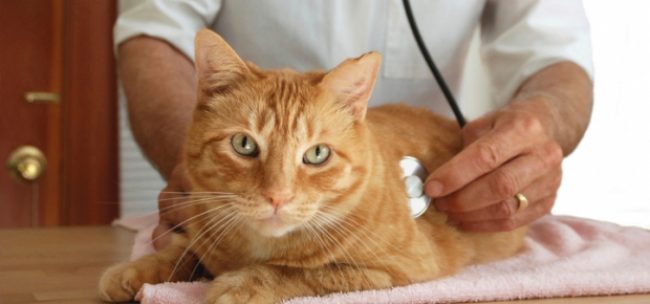
In the treatment of plague, symptomatic drugs are used.
Specifically, the veterinarian uses antibiotics and immunostimulants, sometimes resorts to washing the stomach of the animal and enemas.
Depending on the condition and age of the animal, the doctor prescribes a course of treatment that lasts from a week to two.
This course must be strictly followed, despite improvements in the condition of the cat.
There are several rules that must be followed. owner:
- The cat must be kept in a warm, regularly ventilated indoors with dim lights. During ventilation, you need to move to another room;
- Feces, urine, discharge from the eyes and nose should be removed immediately, wipe the eyes with a swab of gauze;
- The room where the sick animal is located needs to be regularly to disinfect;
- It is forbidden to force feed a cat. When comes back to him appetite, the first thing you need to give him is meat broth, cottage cheese or yogurt. After two days, the diet can be varied with marine white fish and lean meat. You can give slightly warmed food five times per day in small portions.
- You can not give the animal greens, vegetables and cereals. Also they banned for 2 months after the recovery of the pet.

Trying to cure a cat with vodka, you can only harm it
What are the ways to prevent plague?
Every responsible cat owner should know that, if other cats live in the house, they must be returned immediately for the time of treatment to friends.
If during the three-week incubation period, the disease does not manifested, they need to be vaccinated, as in an apartment with a sick virus remains, sometimes about a year.
There are currently vaccines that stimulate cat’s development of intense immunity, which persists twelve months.
It is best to vaccinate an animal at an early age – when the kitten is only two months old, then it needs to be revaccinated in three weeks.
Animals over adulthood need this vaccine give every year.

Vaccination is the best way to avoid the cat’s plague.
The most common vaccines are drugs such manufacturers like
- Nobivak
- Multifel
- Quadric,
- Felocel.
However, do not forget that you can only be vaccinated. healthy cat that does not have helminths and external parasites.
You can read about how to cure a cat of worms. here: https: //kot-pes.com/glisti-u-koshek/
In addition, you can not vaccinate very small kittens in which teeth have not changed yet, as well as pregnant cats.
https://www.youtube.com/watch?v=JwGA5Z7atmU ?rel=0&enablejsapi=1″ style=”border: none;”ebkitAllowFullScreen mozallowfullscreen allowFullScreen>Plague in cats: Symptoms and treatment options for the disease
Plague is a deadly viral disease. Cats have a disease there are three forms: fulminant, acute and subacute, from which the duration and speed of its course depends, as well as symptoms. The smaller the animal’s age, the harder it is to fight infection.






